Homesteaders' dream to turn this Kitsap property into a forest 'oasis' coming true
A 50-foot-long bridge spanning Wildcat Creek and filling the air with the scent of new lumber provided a viewing point for one of the most-anticipated fall shows in Kitsap County this month: the arrival of chum salmon.
The bridge is the newest addition to the Rhododendron Preserve, a 466-acre forest off Seabeck Highway in Bremerton that contains one of the largest remaining areas of lowland virgin forest in the Puget Sound basin. The expansive bridge with a grated deck and sturdy railings provided a front-row seat for watching the salmon splashing and swimming through Wildcat, Lost and Chico creeks, completing the last leg of their journey home to their freshwater spawning grounds.
The new bridge provides a route to the preserve's most popular attraction outside of the salmon: the "Big Tree," an estimated 800-year-old Douglas fir that is said to be the largest publicly viewable tree in Kitsap. The old trail required crossing a bridge built over a downed tree that wasn't permitted and was beginning to list.
Completed in mid-October, the new bridge is a piece of a larger transformation that has taken place in recent months at the preserve, owned by the Keta Legacy Foundation, also known as the Mountaineers Foundation.
Also recently constructed was a pavilion where visitors to the preserve — hikers, those viewing salmon or classroom groups — can gather out of the rain. In addition, a viewing platform now surrounds the Big Tree.
While the structures provide visible new amenities to the increasing number of visitors to the preserve, those who have known it through its history see larger changes aimed at making a resilient forest and wildlife corridor that thrives for years to come amid Kitsap County's increasing urbanization and climate change.
Preserving a 'forested green oasis'
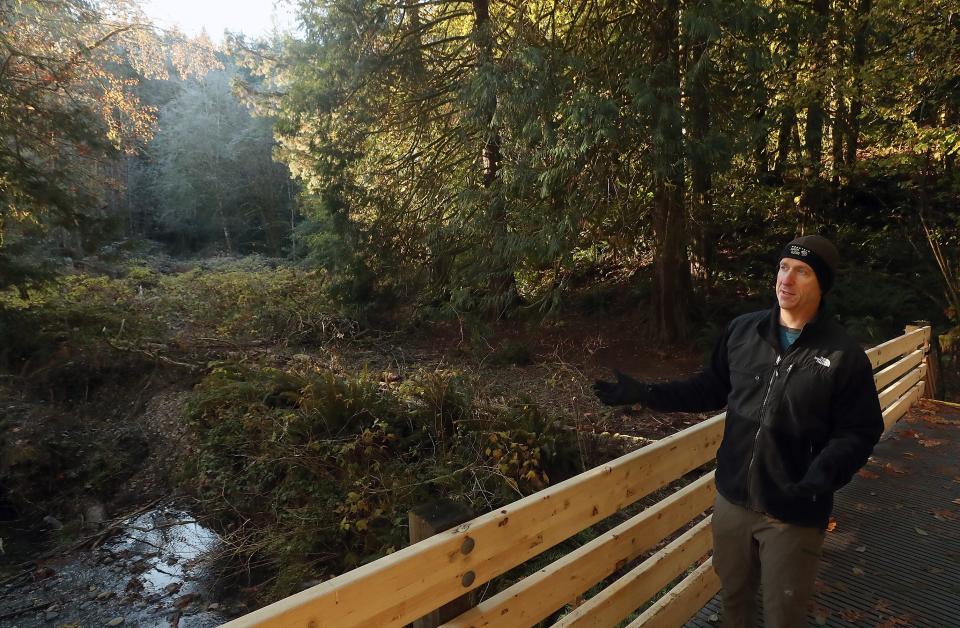
Within the 466 acres is an area known as Hidden Valley, where Lost Creek and Wildcat Creek converge to form Chico Creek. There, a homestead formed in the late 1890s and grew over the decades to include over half a dozen structures, including a barn, cabin, house, carport and caretaker's house.
S. Edward Paschall, who acquired the homestead in 1907, and his daughters wanted the forest filled with trees, rhododendrons and trilliums to remain a "forested green oasis" that continued to welcome generations of "outdoor lovers," according to an article that ran in "The Mountaineer" in 1955. They turned over dozens of acres in the valley to the Mountaineers in the 1900s, and one of the daughters lived on the homestead until 1978. A caretaker lived there until the early 2000s, and once he passed away, the entirety of the preserve was turned over to the foundation, according to Jeff Wirtz, president of the Keta Legacy Foundation.
As the years went on, old structures began to fall into deep disrepair, with Wirtz noting that "Mother Nature was reclaiming the valley, one way or another." Trees fell into some buildings, and others flooded as the creeks nearby undercut the banks they were perched on.
So, the addition of the new structures this fall also came with the removal of all the old ones. When all was said and done, 500,000 pounds of mixed debris was carried by trucks via a curvy road out of the valley.
"It was a constant run of dump trucks up and down there," he said.
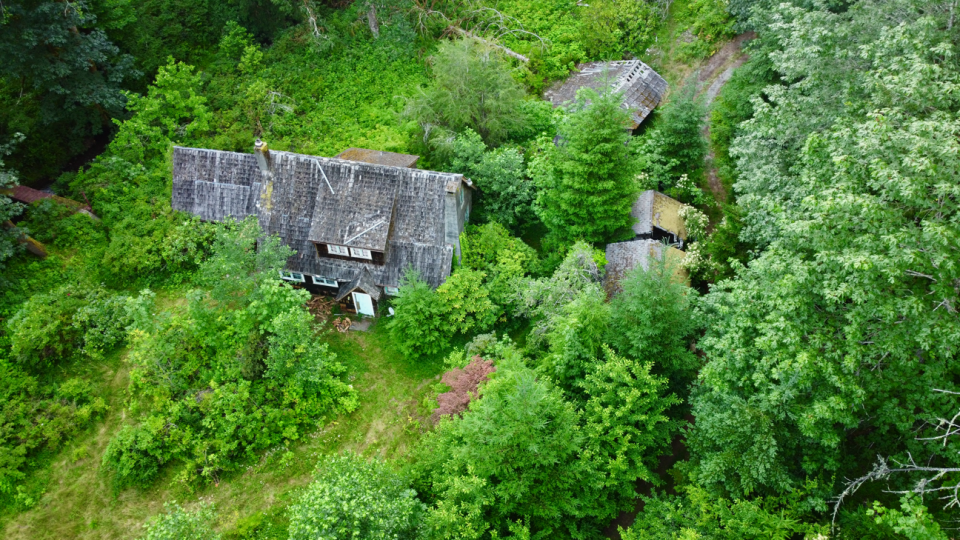
As he points out the locations of the former buildings, Wirtz talks about their threats to the habitat and safety of the preserve. But he acknowledges getting rid of the structures is the end of the visible legacy of the Paschall family, who recognized the value of the forested valley in the early 20th century, a time when roads were expanding and logging pressures were taking hold in Kitsap County.
"It's bittersweet to take all of their structures out," Wirtz said. "But we're completing the vision they wanted."
"Now their legacy is something else that is better and more tangible for people," he said.
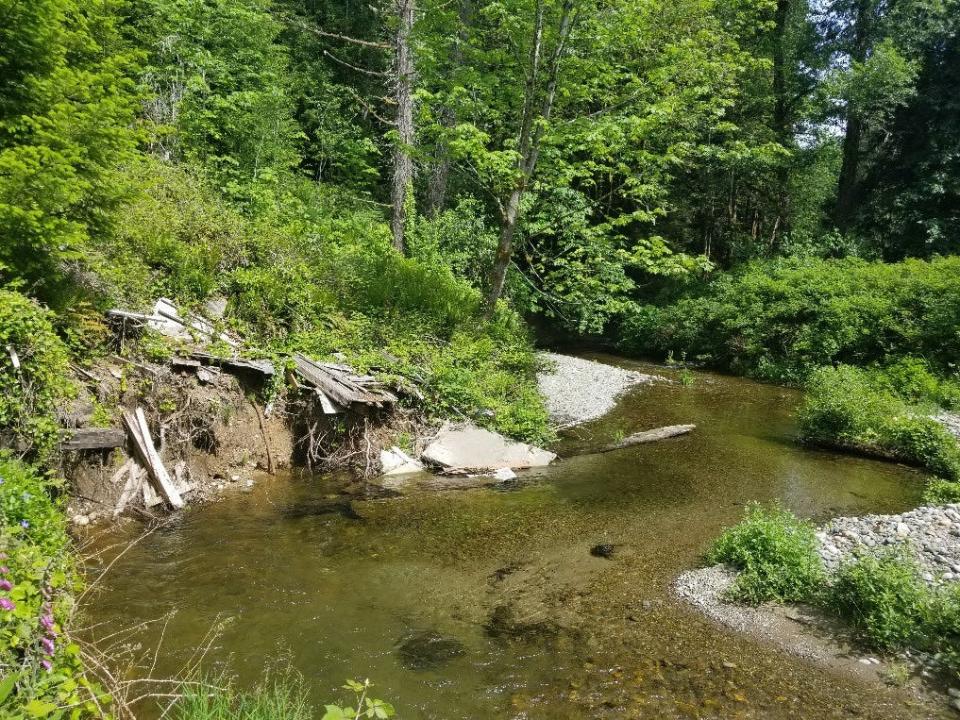
A broad expanse that is now rid of old structures will soon be cleared of invasive blackberries as well, thanks to the work of the Washington Conservation Corps. In their place, Garry oaks and white pine seedlings are being planted — native trees previously in the preserve but logged for the homestead. Such trees have been shown to be resistant to heat, a quality Wirtz said will be needed as spiking summer temperatures become more common. They will join the stands of established Douglas firs and a couple of surprising tree finds — sequoias as well as tulip trees and Japanese maples, non-native, non-invasive trees likely brought in by the homesteaders but that add diversity to the forest.
"Eventually, the valley will be all trees," Wirtz said hopefully, adding that he won't see the final outcome of his work in his lifetime.
Those trees will bring new shade to the valley, keeping it cooler, which will be helpful to the migrating salmon.
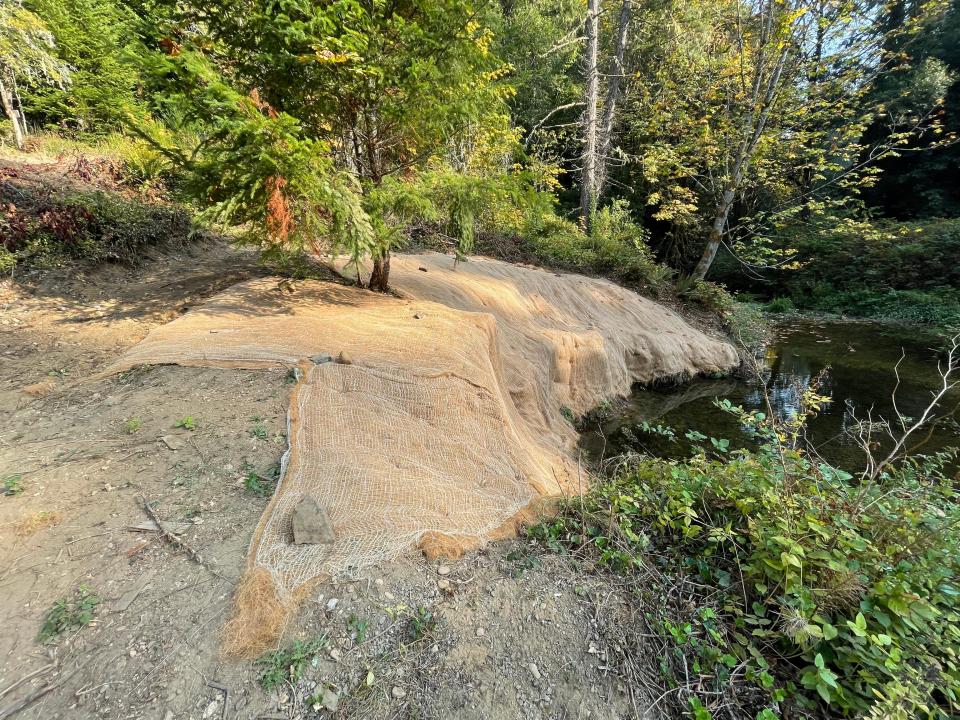
Wirtz said he was thankful that the valley could be restored at a time when the road out was still navigable by truck, or else, it "would be a junkyard for eternity."
More:Mountaineers plan learning center at little-known preserve
Making the preserve more accessible
The opening of the valley with the new structures gives visitors more places to access and explore, a feature that Amy Lawrence, a biology and environmental science professor at Olympic College, is excited about.
Lawrence is a member of the Keta Legacy Foundation board, and she has been taking her classes to the preserve for nearly 20 years. There, they view salmon and learn about stream ecology.
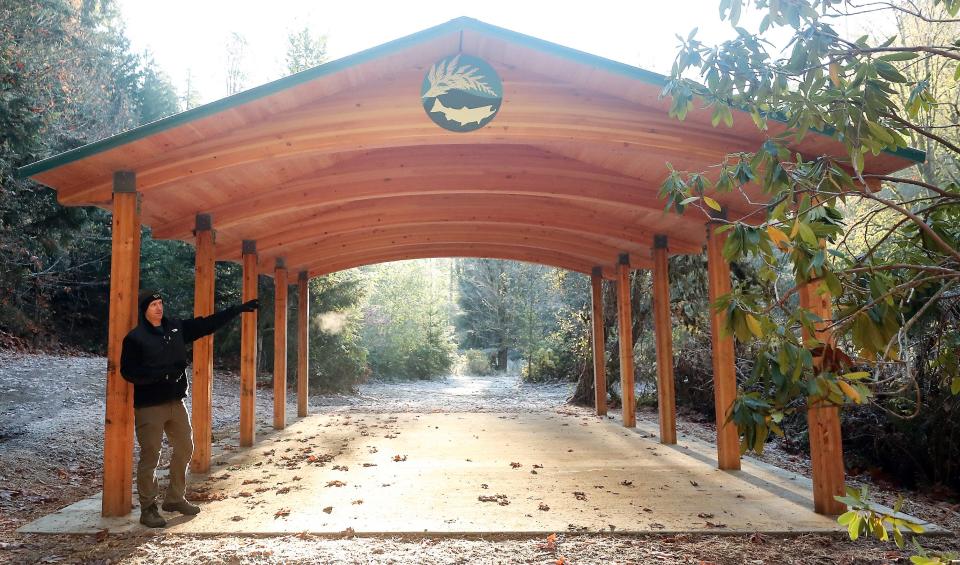
"In the past, I haven't really taken my students into the valley, because we didn't want to advertise that there were structures and that those structures were dilapidated," she said. "It was an attractive nuisance."
This fall, her classes were able to fully explore the valley and access multiple viewpoints, including the new bridge, to see the salmon swimming. When it began to rain, she took her classes under the pavilion.
"Both the things (the bridge and pavilion) together helped the experience, and allowed some students to do it that may have been hesitant otherwise," she said. "They made it so we could cover more ground, and made it easier to access Big Tree as well."
Prior to the improvements, the big appeal of the preserve was the Big Tree Trail, a 1.5-mile roundtrip hike from the parking lot of the preserve to the tree. The popularity of the tree put it at risk, as its numerous visitors unknowingly contributed to compacting the roots every time they stepped near it to examine it more closely or take a photo, Wirtz said. Hikers created a path around the tree that Wirtz and other board members worried would erode the back of the tree, potentially undercutting it.
The tree's new platform gives visitors access while protecting it.
Working to protect, grow the preserve
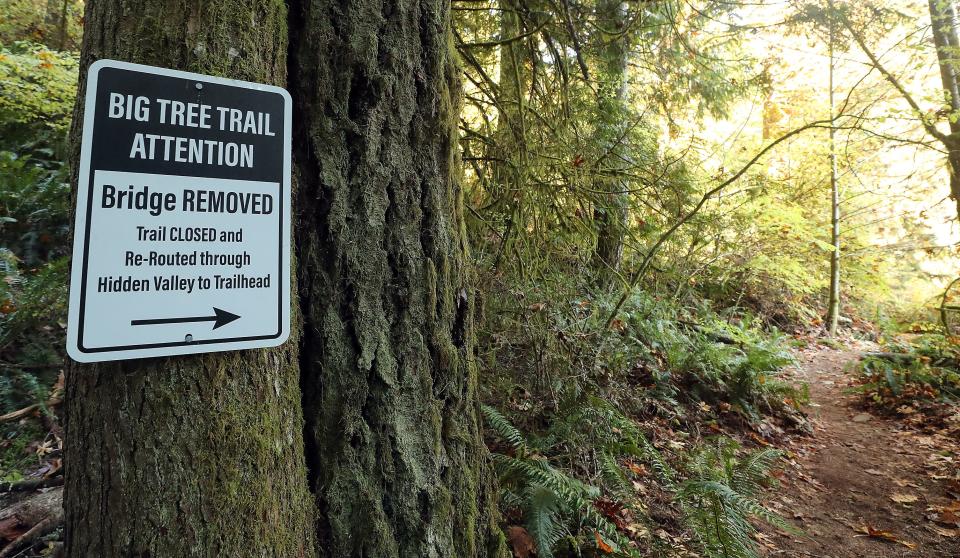
The improvements made this summer were orchestrated by Wirtz and the foundation's board, all of whom are volunteers. Wirtz estimated the cost of the project was between $400,000 and $500,000 and was funded by bequests made to the Keta Legacy Foundation over the decades and donations through its annual "Fall for Fish" fundraiser.
On a larger scale, the foundation has also been working to expand the preserve by acquiring surrounding parcels it hopes will help create a larger buffer between it and Kitsap's growth and development. Ueland Tree Farm is a neighbor on one side of the preserve, and in 2021 the foundation purchased 40 acres from Ueland, bringing the preserve up to its current 466 acres.
Small neighboring parcels have also been acquired. This year, the foundation acquired a property that neighbored the preserve off Seabeck Highway after the parcel's owner died. The parcel was cleared of tires, trash and other debris. Wirtz said the property now gives the foundation a place to create a bus-turnaround site, further increasing access to schools and educational groups who have a hard time accessing the preserve's current, deeply sloped driveway. They hope to add a welcome sign there for better visibility from the highway.
Wirtz said more people seemed to discover the preserve during the pandemic, when they were getting outdoors more. Lawrence said she believes that it's becoming more well-known.
"I think people appreciate getting into a place that feels as wild as the Olympics, without driving three hours to get there," she said.
To find out more about visiting the preserve and how to get there, go to ketalegacy.org/rhododendron-preserve/visit/.
Kimberly Rubenstein is the local news editor of the Kitsap Sun. She can be reached at kimberly.rubenstein@kitsapsun.com or 360-792-5263.
This article originally appeared on Kitsap Sun: Dream to turn Rhododendron Preserve into forest 'oasis' coming true

